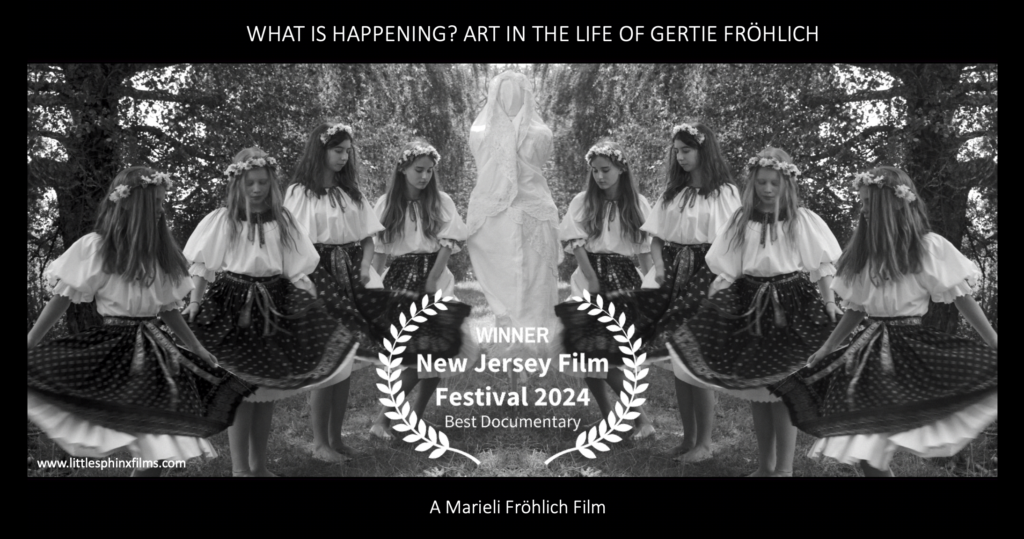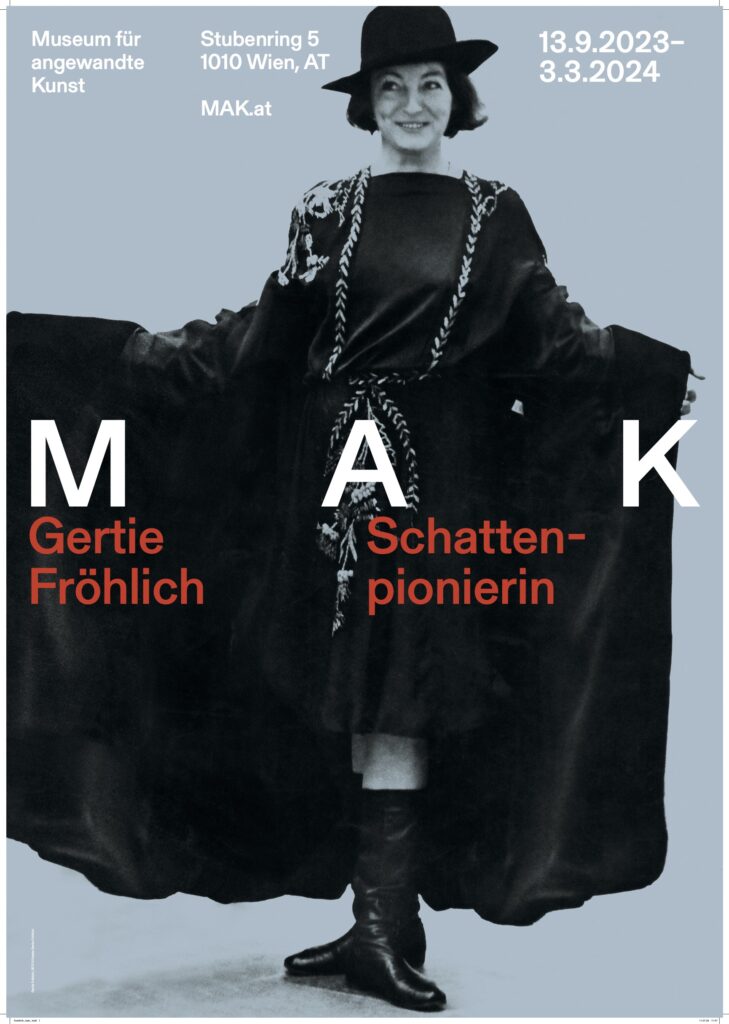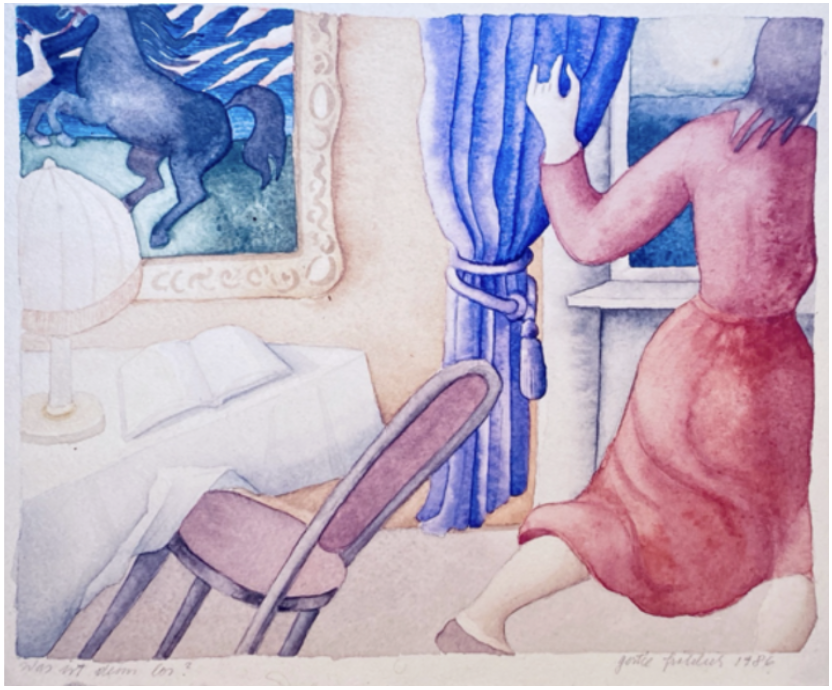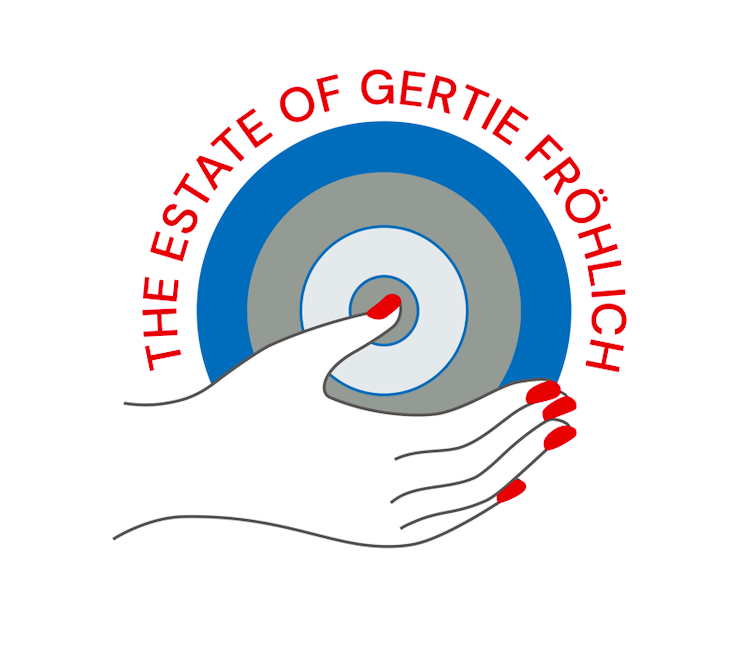
WHAT’S HAPPENING? Art in the Life of Gertie Fröhlich, a film by Marieli Fröhlich 2023 was awarded Best Documentary at the New Jersey International Film Archives in October 2024
Next screening: 26th of April 2025 6pm at Anthology Film Archives New York
Gertie Fröhlich Retrospective MAK 13.9.2023 – 3.3.2024
(In)visible Pionier
Curated by Kathrin Pokorny-Nagel in creative collaboration with Marieli Fröhlich

It is hard to think of someone who singlehandedly influenced the Viennese Post-War avant-garde movement more than Gertie Fröhlich (1930–2020).
While studying at the Academy of Fine Arts, she met other young students who would become part of the Viennese art scene and played a key role at Galerie Sankt Stephan, albeit under the shadow of gallery owner Otto Mauer. In little time, her Viennese apartment became a creative hub and springboard for many of her fellow artist’s careers. The MAK’s exhibition is the first comprehensive retrospective of Fröhlich’s work, delving into her Gesamtkunstwerk as an artist, graphic designer, creator of edible art, and advocate of Viennese post-war modernism.
Gertie Fröhlich left an extensive oeuvre encompassing a wide range of disciplines and played a historical role during the early stages of the Viennese Avante-Garde.
“This show was marvelous“ – Renowned curator Helen Molesworth shares some of the best shows she saw in 2023 from around the globe, including Gertie Fröhlich’s retrospective at the MAK, with her friend, the artist Steve Locke, in a new episode of David Zwirner’s Podcast Dialogues – The Best Art of 2023.
During the exhibition the film WHAT’S HAPPENING? Art in the Life of Gertie Fröhlich, a film by Marieli Fröhlich 2023, will be shown.

In 2018, director Marieli Fröhlich initiated a documentary about her mother, the artist Gertie Fröhlich. The seeds of the film began as a series of interviews with the 88-year-old artist, which were interrupted by her passing in 2020. What’s Happening? is the title of both the finished documentary and a painting dated 1986. The picture shows a running woman, her back turned towards the viewer, fleeing her bourgeois interior. She has knocked over a chair and abandoned an unfinished book beneath a painting of a bucking horse. The horse is too wild for the constraints of its frame, a picture within the painting‘s horizon, which also lines up with an unseen vanishing point beyond the window. Is this exterior landscape outside the window an infinite stage in which the vicissitudes of the protagonist’s daily life fall away, making way for lasting freedom in Fröhlich‘s Arcadia?
The director interviews over 20 artists, friends, and former collaborators whose recollections unveil the themes and the controversy surrounding Gertie Fröhlich‘s status as an artist, uncovering her influence on the Post-War Vienna Avant-Garde starting in her early 20s. As the film unfolds, these contradictions come to a head: Is the existence of the most important Austrian post-war gallery, Galerie nächst St. Stephan, indebted to Gertie Fröhlich, or was she merely the good spirit and secretary? Was her retelling of Greek myths an analogy for her vision of a refreshed matriarchal psyche — a position of equal significance to manifestations and deterritorialization of the body by Austria’s feminist artists?
